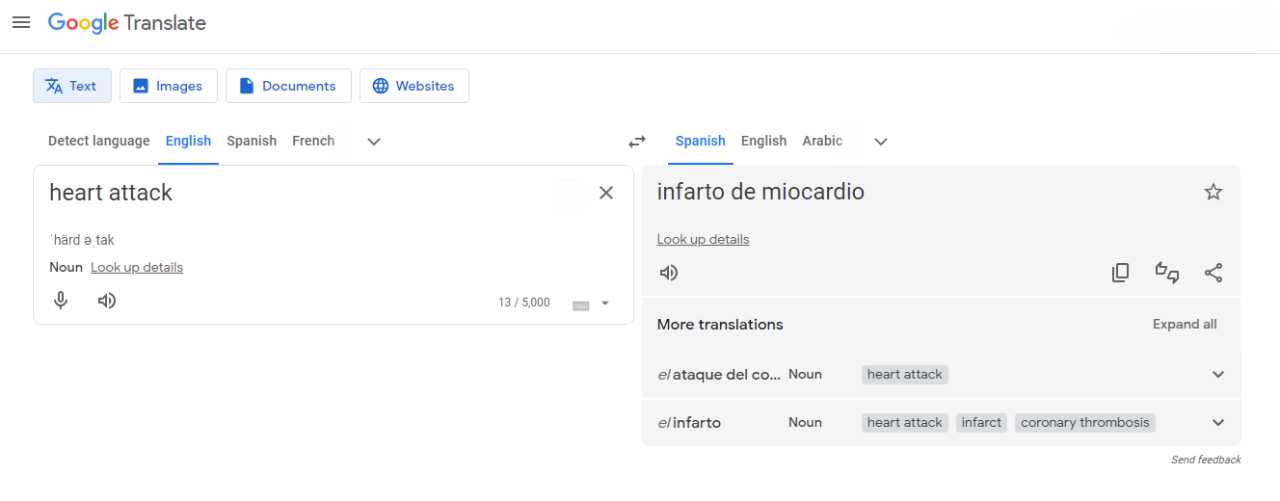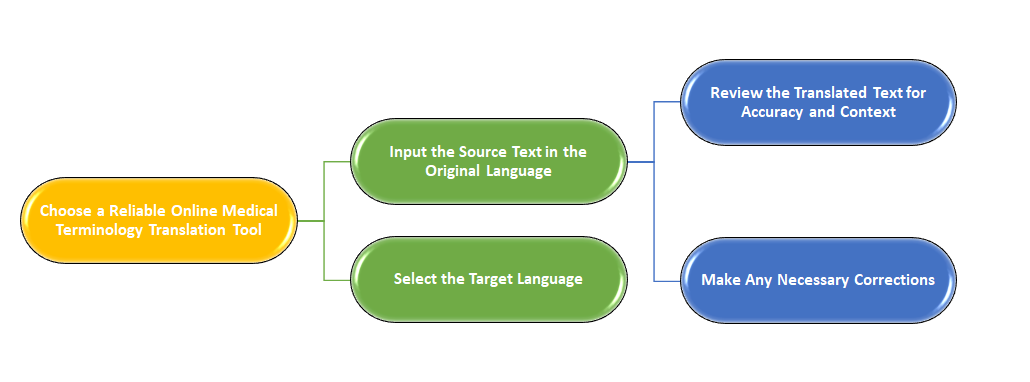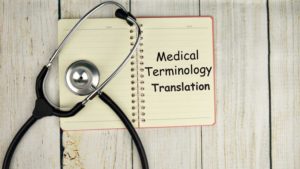In our interconnected world, healthcare professionals and patients often need to communicate medical information across language barriers. Accurate medical terminology translation is essential to ensure that crucial medical details are clearly understood.
In this article, we’ll delve into the world of free online medical terminology translation, its significance, challenges, and the tools available to bridge language gaps effectively.
The Significance of Accurate Medical Terminology Translation
Healthcare is a universal need, and accurate communication is a matter of life and death. When healthcare professionals and patients speak different languages, misunderstandings can lead to misdiagnoses and improper treatment.
Accurate medical terminology translation ensures that medical conditions, symptoms, and treatments are conveyed correctly.
Challenges in Medical Terminology Translation
Medical terminology translation can be tricky due to the specialized language used in the healthcare field. For instance, medical terms can vary significantly between languages, and the translation of these terms must be precise.
Take the example of the word “heart attack.” In Spanish, it’s called “infarto de miocardio,” while in French, it’s “crise cardiaque.“
These variations in medical terminology require translators to have a deep understanding of both languages and the medical context to ensure accurate communication.
Here are some of the key difficulties faced in this specialized field.
- Language Nuances
- Cultural Differences
- Precision and Specificity
- Context Matters
- Multiple Meanings
- Constant Updates
- Rare Conditions and Terms
Free Online Medical Terminology Translation Tools

Imagine a scenario where a non-English-speaking patient visits a hospital in an English-speaking country.
They present with a medical condition that needs urgent attention. The doctor, who is fluent in English, struggles to understand the patient’s symptoms and medical history because of the language barrier.
This is where free online medical terminology translation tools come to the rescue.
What Are These Tools?
Free online medical terminology translation tools are digital platforms or software designed to convert medical information from one language to another. They are easily accessible on the internet and provide quick and convenient translations, often free of charge.
How They Work
These tools operate based on sophisticated algorithms that analyze the input text and generate translations. Some tools, like Google Translate, have an extensive database of words and phrases in multiple languages, allowing them to convert text quickly.
Example:
Suppose a Spanish-speaking patient describes their symptoms in Spanish, and the doctor needs to understand it in English.
They can input the Spanish text into the online tool, select English as the target language, and with the click of a button, they get an English translation. This enables the doctor to comprehend the patient’s condition accurately.
Google Translate vs. Specialized Medical Translation Tools
When it comes to translating medical terminology, you have two primary options: Google Translate, a widely used general translation tool, and specialized medical translation tools. Each option has its strengths and weaknesses.
Let’s explore the differences between them with some examples and then create a comparison table.
| Aspect | Google Translate | Specialized Medical Translation Tools |
| Accuracy in Medical Terminology | May lack precision, especially in complex terms | Provides accurate translations with medical context |
| Language Coverage | Offers translations for many languages | Primarily focuses on medical languages |
| Ease of Access | Widely accessible and user-friendly | May require registration or specialized knowledge |
| Speed | Provides quick translations | May be slightly slower due to context analysis |
| Applicability | Suitable for basic, everyday translations | Best for medical documents and professional use |
| Context Awareness | May miss nuances and context in medical terms | Understands and maintains context in medical language |
| Confidentiality | Google may store data | May offer better data privacy options |
Steps to Translate Medical Terminology Online
When you need to translate medical terminology online, it’s important to follow a set of systematic steps to ensure accuracy and clarity in the translation process. Here are the key steps to successfully translate medical terms and texts:

Step 1: Choose a Reliable Online Medical Terminology Translation Tool
Select a reputable online tool that specializes in medical terminology translation. It’s essential to use a tool known for its accuracy and ability to handle complex medical jargon. For example, let’s consider a popular medical translation website like Emtran Pro.
Step 2: Input the Source Text in the Original Language
Once you’ve chosen your translation tool, input the medical text that needs translation in its original language. For instance, if you have a medical report in French that you need to translate into English, you’d enter the French text into the translation tool.
Step 3: Select the Target Language
Choose the language you want the medical terminology to be translated into. In our example, this would be English. Ensure that the online tool supports both the source and target languages.
Step 4: Review the Translated Text for Accuracy and Context
After the tool has processed your request, it will provide you with a translated version of the medical text. Review the translation carefully to ensure that it accurately conveys the intended meaning.
Pay attention to context and ensure that medical terms are correctly translated. For example, if the original French text mentioned “appendicite,” the translated English version should correctly indicate “appendicitis.”
Step 5: Make Any Necessary Corrections
If you notice any inaccuracies or areas where the translation could be improved, make the necessary corrections. Sometimes, automated tools may not fully capture the context, and manual adjustments may be required to ensure precision in medical terminology translation.
Benefits of Online Medical Translation
Online medical translation offers several advantages that make it a valuable resource for healthcare professionals and patients. Here are some key benefits with illustrative examples:

- Accessibility: Online medical translation tools are available 24/7, making them convenient for immediate translation needs. For instance, if a non-English speaking patient arrives at a hospital with a severe condition, the medical staff can quickly use an online tool to communicate the necessary instructions and medical information.
- Speed: These tools provide immediate translations, saving time in critical situations. Imagine a scenario where a doctor needs to understand a foreign patient’s symptoms urgently. Online translation allows the doctor to communicate effectively without delay.
- Cost-effectiveness: Many online medical translation tools are free of charge, reducing the financial burden on both patients and healthcare facilities. This affordability ensures that even smaller clinics or local healthcare providers can access translation services without a significant investment.
- Convenience: The user-friendly interfaces of online tools make them easy to use with a minimal learning curve. Healthcare professionals can integrate these tools into their daily routines. For example, a nurse in a multicultural healthcare facility can quickly translate a patient’s prescription into their native language, ensuring they take the right medications.
- Multilingual Support: Online medical translation tools often offer a wide range of language options. This diversity allows healthcare providers to cater to patients from various linguistic backgrounds. For instance, a hospital in a cosmopolitan city can effectively communicate with patients who speak languages like Spanish, Mandarin, or Arabic.
Risks and Limitations of Online Medical Translation
Online medical translation tools are convenient but have limitations. They may not capture precise medical meanings, struggle with complex jargon, and raise privacy concerns.
Some of the limitations and risks attached to these tools are.
- Loss of Specific Meaning: Online tools might not grasp the precise meaning of medical terms. For example, the term “heart attack” might have nuanced synonyms in different languages, leading to potential misunderstandings.
- Complexity: Medical language is intricate. Online tools may not accurately translate complex medical jargon. For instance, translating a detailed surgical procedure could result in a loss of essential details.
- Data Privacy Concerns: When using online tools, your medical data may briefly pass through servers, posing data privacy risks. If you’re translating a patient’s medical history, this could be a concern for confidentiality.
Conclusion
Free online medical terminology translation tools are valuable resources for bridging language gaps in the healthcare sector. They offer accessibility and convenience, but their limitations in terms of accuracy and privacy must be considered.
For critical medical situations, professional translation services may still be the preferred choice. However, for quick and simple translations, online tools can be a lifesaver.
FAQs
One of the popular websites for translating medical terms is Emtran Pro. It offers accurate medical terminology translation services.
To translate medical terminology, use a reliable medical translation tool or consult a professional translator with medical expertise.
One of the top medical terminology dictionaries is “Stedman’s Medical Dictionary,” known for its comprehensive coverage of medical terms.
Yes, there are several dictionaries for medical terminology, including online and printed resources. “MediLexicon” and “Taber’s Medical Dictionary” are other notable options.







